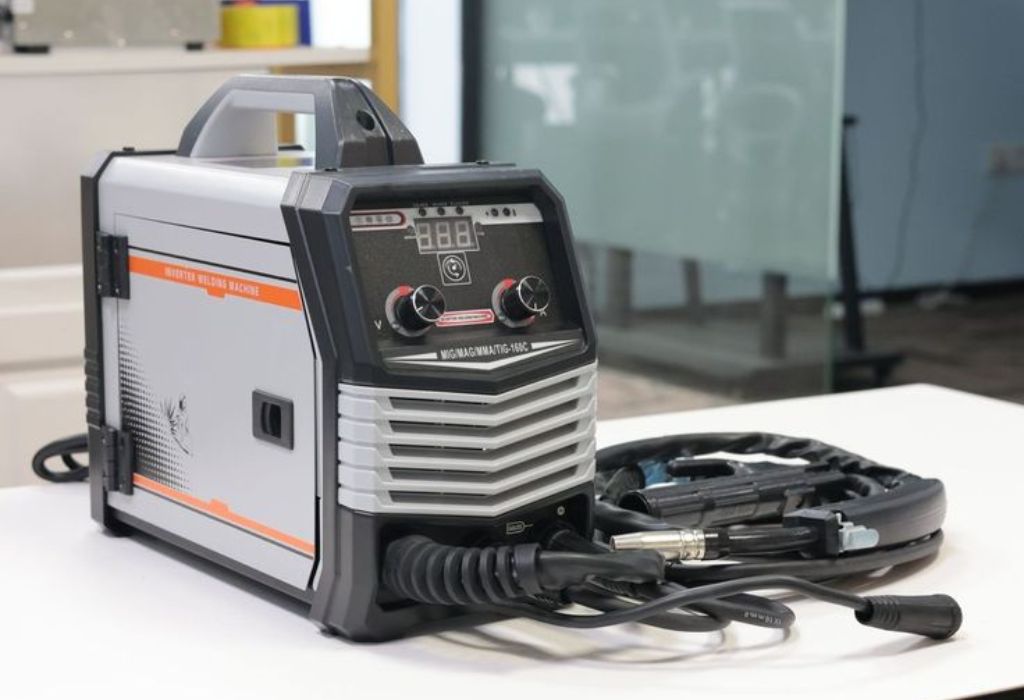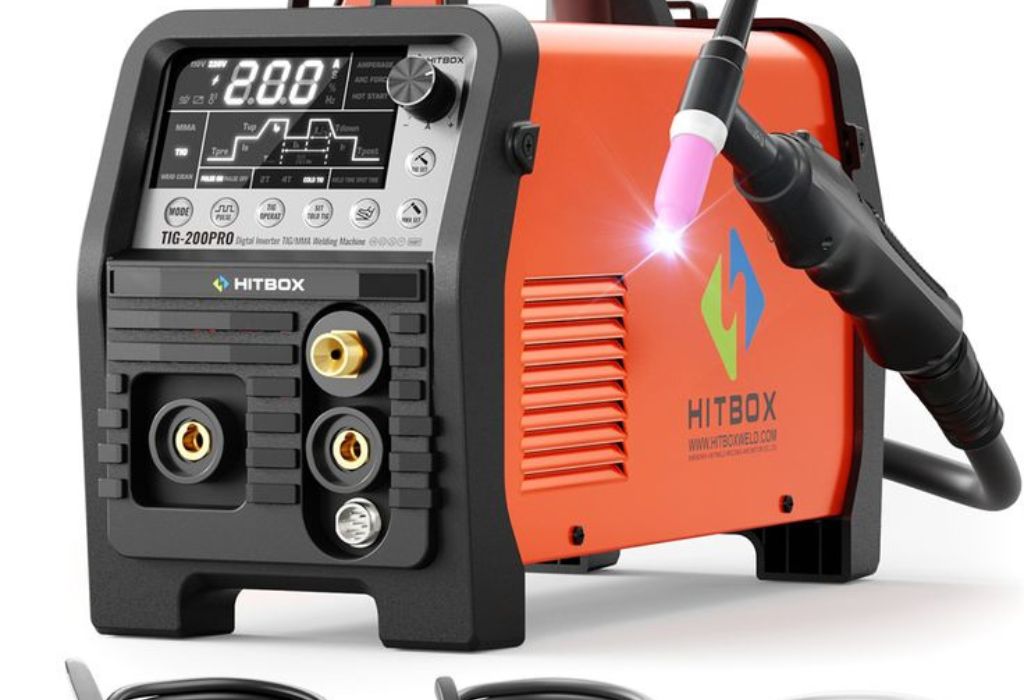Imagine needing to join two metal parts but being unable to use heat because it might damage sensitive components or distort the material. In fields like aerospace, electronics, and precision manufacturing, this problem is common and often limits traditional welding methods.
Now, imagine a process that fuses metals together permanently at room temperature, without sparks, heat, or molten metal.
That process is made possible by the cold welding machine, a breakthrough in solid-state welding that uses pressure instead of heat to create exceptionally strong bonds.
Cold welding machines work by pressing two clean metal surfaces together under extremely high pressure.
When the oxide layers are removed and the atoms on each surface make direct contact, they bond at the molecular level to form a seamless joint. This results in a connection so strong that it can match or even exceed the strength of the base metal.
The process is widely used in applications where heat could cause problems—such as in electrical wiring, dissimilar metal joining, or space engineering. It delivers high precision, no heat distortion, and a clean, defect-free finish.
What Is a Cold Welding Machine and Why It Matters

A cold welding machine is a specialized device that joins two metal surfaces together without the use of heat, electricity, or filler material.
Instead of melting the metal, it applies extremely high pressure to clean, oxide-free surfaces, forcing the atoms from each metal to bond at the molecular level.
This creates a solid-state joint that is as strong and durable as a traditional welded connection but without the thermal distortion or structural changes caused by heat.
Understanding what a cold welding machine is becomes essential for industries that work with materials sensitive to heat, such as aluminum, copper, or other non-ferrous metals.
Because the process occurs at room temperature, there is no heat-affected zone (HAZ), oxidation, or risk of material weakening, making it ideal for precision engineering and electrical applications.
Cold welding machines are particularly valuable in aerospace, microelectronics, and cable manufacturing, where cleanliness and precision are critical.
Their ability to join dissimilar metals—such as copper to aluminum—without introducing impurities makes them indispensable for modern production lines.
This innovative process proves that heat isn’t always necessary to achieve a strong metallurgical bond.
By mastering what is a cold welding machine and how it functions, engineers and technicians can produce flawless joints that meet the high standards of today’s advanced industries.
How Cold Welding Machines Work — The Mechanism
To understand how a cold welding machine works, it helps to start with the principle behind it: solid-state bonding.
Unlike arc or gas welding, where metals melt and fuse upon cooling, cold welding creates a bond through extreme pressure and surface cleanliness.
When two metal surfaces are pressed together under the right conditions, their atoms share electrons and form a single, continuous piece of metal.
The process begins with surface preparation. Both metal pieces must be cleaned thoroughly to remove oxides, oils, and contaminants that could prevent atomic contact. Even microscopic impurities can block the bonding process.
Once the surfaces are cleaned, they are positioned in the cold welding machine, which uses mechanical or hydraulic pressure to push them together.
As the pressure increases, the metals deform plastically, meaning their surfaces flatten and merge at an atomic level. The key factor here is pressure, not temperature.
The metals never melt; instead, they bond in their solid state through metallic diffusion. This produces a seamless, uniform joint with no porosity, distortion, or heat damage.
The efficiency of this mechanism depends on several factors—material ductility, surface condition, and the uniformity of the applied pressure.
When executed properly, the resulting joint can exhibit up to 95% of the strength of the parent materials, making cold welding one of the most precise and reliable joining methods available.
Applications and Use-Cases of Cold Welding Machines
Cold welding machines have earned their place across several industries because of their precision, cleanliness, and ability to join metals without introducing heat or contaminants.
Their versatility makes them suitable for applications ranging from delicate microelectronics to large-scale industrial connections.
One of the most common uses is in electrical and electronic manufacturing. Cold welding ensures strong and conductive joints in copper and aluminum wires without compromising their conductivity or causing oxidation.
This makes it ideal for producing electrical connectors, cable splices, and battery terminals, where low resistance and reliability are essential.
In the aerospace and automotive industries, cold welding is used to bond lightweight materials like aluminum and copper alloys, which can lose strength or deform when exposed to heat.
Because the process leaves no heat-affected zone, it preserves the material’s original structure, making it perfect for joining thin components or high-precision parts.
The technique is also valuable in micro-joining and sensor technology, where components are too small or delicate for traditional welding. In addition, material research labs use cold welding to study metal bonding and develop advanced alloys.
By understanding what is a cold welding machine and its real-world applications, engineers can leverage this process for both high-performance and energy-efficient production, ensuring stronger and cleaner results across multiple industries.
Advantages and Limitations of Cold Welding Machines
Cold welding machines offer several distinct advantages that make them indispensable in precision engineering and advanced manufacturing.
Since they use pressure instead of heat to bond metals, there’s no melting, spatter, or heat-affected zone. This preserves the original properties of the metals, maintaining both conductivity and structural integrity.
The process also eliminates the need for filler material or shielding gas, reducing operational costs and environmental impact.
Another major advantage lies in joining dissimilar metals such as copper and aluminum, which are often challenging to weld using conventional methods.
Cold welding forms a clean metallurgical bond between the two, ensuring efficient electrical conductivity without the risk of galvanic corrosion.
Because there’s no oxidation or thermal distortion, the final joint has an exceptionally smooth surface finish—ideal for high-precision applications like aerospace components and electronic contacts.
However, cold welding machines also have some limitations. The process requires extremely clean and oxide-free surfaces, which demand meticulous preparation.
It’s also best suited for ductile, non-ferrous metals; hard or brittle materials don’t bond effectively under pressure.
Additionally, the equipment must deliver very high pressure, which can make large-scale operations more complex and costly.
Despite these challenges, the benefits far outweigh the drawbacks. When properly executed, cold welding produces durable, defect-free joints that remain stable under stress—making it one of the most efficient and sustainable metal joining techniques available today.
Selecting the Right Cold Welding Machine — Key Considerations
Choosing the right cold welding machine depends on the type of materials, production requirements, and level of precision needed.
Since this technology relies on mechanical pressure rather than heat, every component—from die alignment to pressure control—plays a critical role in achieving a flawless joint.
Start by evaluating the material compatibility. Cold welding works best on ductile, non-ferrous metals such as copper, aluminum, gold, and silver.
For applications involving these materials, a machine with adjustable pressure and interchangeable dies ensures better control and versatility.
If the project requires joining dissimilar metals, look for models designed specifically for multi-metal compatibility to maintain uniform bonding strength.
Another factor to consider is the pressure capacity. Machines designed for heavy-duty or industrial use need higher tonnage and precision force control, while smaller bench-top models work best for fine wires or micro-components.
Digital control panels and feedback systems enhance accuracy by maintaining consistent force throughout the welding cycle.
Finally, assess automation features and operational efficiency. Advanced cold welding machines integrate programmable settings, automatic clamping, and real-time monitoring to improve productivity and reduce human error.
By choosing equipment that matches your project’s scale and complexity, you can ensure maximum performance, longer tool life, and consistent, high-quality welds across every operation.
Installation, Operation, and Maintenance of Cold Welding Machines

Proper installation and maintenance are crucial to ensure a cold welding machine performs consistently and produces defect-free joints.
Since the process depends heavily on surface cleanliness, pressure accuracy, and machine stability, each stage—from setup to upkeep—must be handled with precision.
During installation, the machine should be placed on a stable, vibration-free surface to maintain die alignment.
Electrical connections must comply with safety standards, and hydraulic or pneumatic systems should be inspected for leaks or pressure inconsistencies.
Before the first operation, calibration of the dies and pressure system ensures that force distribution remains even across the weld area.
For operation, surfaces must be meticulously cleaned using chemical solvents or mechanical abrasives to remove oxides, oil, and debris. Even microscopic contamination can prevent atomic bonding.
Operators should verify the alignment of the workpieces and check that the pressure settings match the material type and thickness. Maintaining uniform force during the weld cycle is essential for achieving consistent metallurgical bonds.
Regular maintenance prevents performance degradation and costly downtime. This includes lubricating moving parts, inspecting dies for wear, and recalibrating sensors periodically.
The machine should be cleaned after every use to remove metal particles that could scratch tooling surfaces.
Routine inspections not only prolong the equipment’s lifespan but also guarantee safety and precision.
A well-maintained cold welding machine delivers repeatable results and remains reliable for both laboratory applications and high-volume industrial production.
Future Trends and Innovations in Cold Welding Machine Technology
The evolution of cold welding machine technology is reshaping how industries approach metal joining.
As demand for cleaner, more precise, and energy-efficient methods grows, engineers are developing smarter, faster, and more versatile machines capable of performing complex welds with minimal human intervention.
One of the most significant trends is automation and digital integration. Modern cold welding machines now come equipped with sensors and feedback systems that monitor pressure, alignment, and surface conditions in real time.
These intelligent features ensure consistent bonding quality while reducing operator error. In automated production lines, robotic arms are being paired with cold welding systems to handle repetitive joining tasks with micrometer-level precision.
Another major advancement is micro and nano cold welding, used in electronics, flexible circuits, and medical devices. This approach allows metals to be bonded at incredibly small scales, supporting the manufacturing of sensors, microchips, and nanowires without thermal stress.
The industry is also exploring eco-friendly applications, as cold welding consumes less energy and produces no harmful fumes or emissions. With the rise of lightweight materials and electric vehicles, the process is becoming a cornerstone of sustainable manufacturing.
Looking ahead, innovations in material science and smart control systems will continue to expand the capabilities of cold welding machines.
As technology advances, this once-specialized process is poised to become a mainstream solution for high-precision, energy-efficient metal bonding in the modern industrial landscape.
Conclusion
Understanding what is a cold welding machine and how it works reveals one of the most innovative metal-joining methods in modern manufacturing.
By replacing heat with controlled pressure, cold welding delivers bonds that are exceptionally strong, clean, and precise—perfect for applications where traditional welding could cause damage or distortion.
This process eliminates the need for filler materials or shielding gases, resulting in an eco-friendly and cost-efficient technique.
Its ability to join dissimilar metals like copper and aluminum expands its use across aerospace, electronics, and energy industries where high conductivity and structural integrity are essential. Each weld produced through this method is seamless, uniform, and free from impurities.
Selecting the right machine, preparing materials correctly, and maintaining the equipment are key to achieving flawless results.
The future of cold welding continues to evolve with automation, digital pressure control, and nano-level joining innovations that promise even greater precision and sustainability.
For industries demanding accuracy, durability, and zero heat distortion, cold welding machines represent the future of solid-state bonding.
By mastering their operation and understanding their potential, professionals can create cleaner, stronger, and longer-lasting metal connections that redefine manufacturing standards.

I’m Darrell Julian, the founder, lead writer, and hands-on welding enthusiast behind ArcWeldingPro.com. With more than 15 years of real-world welding experience, I created this platform to share what I’ve learned in the field, in the shop, and in the heat of the arc.


